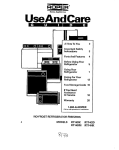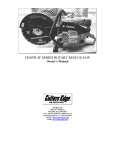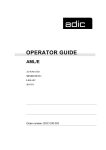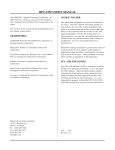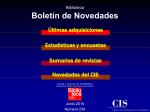Download for t Use the D Am er Ma Diez mplif anua zel D- fier al -Moll
Transcript
Use er Ma anua al for tthe D Diez zel D--Molll Am mpliffier Table of Contents Chapter One: Safety and Warranty 1.1 Safety Warnings 1.2 Warranty Information Chapter Two: Using Your D-Moll 2.1 Mains Connections, Power and Standby 2.1.1 Mains/connect to power outlet 2.1.2 Power up, Warm up, Standby off 2.1.3 Power tube caution 2.1.4 Operating Temperature 2.1.5 Power Tube Information Chapter Three: Peripheral Connections 3.1 Front Panel Connections 3.1.1 Signal In 3.1.2 Connection Information 3.1.3 Cable Selection 3.2 Rear Panel Connections 3.2.1 Send/Return Loop 3.2.2 Parallel and Serial Return 3.2.3 Compensated Out 3.2.4 Speaker Connections 3.3 MIDI Connections 3.3.1 MIDI In 3.3.2 MIDI Thru Chapter Four: The Three Pre-Amplifiers 4.1 Pre-Amplifier Duties 4.1.1 Channel One 4.1.2 Channel Two 4.1.3 Channel Three 4.2 Pre-Amplifier Tubes Chapter Five: Power Amplifier 5.1 Tone and Volume of the Power Amplifier 5.1.1 Master Volume 5.1.2 Presence 5.1.3 Deep 5.2 Power Amplifier Tubes 5.2.1 Function 5.2.2 Selection 5.2.3 Life Span – Tube Fuses Chapter Six: Functions and Switches 6.1 6.2 6.3 6.4 6.5 6.6 6.7 Programming D-Moll Manual Channel Selection Mid Cut on/off Loop on/off Mute on/off Master 2 Store Chapter Seven: Midi 7.1 MIDI 7.2 MIDI In 7.3 MIDI Thru 7.4 MIDI Communication 7.4.1 Omni Mode 7.4.2 Single Channel Mode – automatic Channel Recognition 7.4.3 Single Channel Mode – manual Channel selection 7.5 Program Information 7.6 Phantom Power Chapter Eight: Remote Switch Chapter Nine: Maintenance and Cleaning 9.1 Cleaning 9.2 Care 9.3 Tube Change Chapter One: Safety and Warranty 1.1 Safety Warnings We would like to stress the importance of the following points, for reasons of your personal safety, product longevity and product liability. Do not use the amplifier in or near wet locations Do not store the amplifier in damp or wet locations Do not operate the Amplifier on voltages other than those designated on the rear panel of the amplifier. Do not open the panels of the amplifier. No user serviceable parts inside. Your D-Moll operates on very high internal voltages, which may still be present after the Amplifier has been turned off and disconnected for a while. Do not use the Amplifier for anything other than its design purpose: To Amplify Electric Guitar Signals! Do not use fuses other than those intended and specified for the amplifier Do not use 2-conductor extension cords or anything other than 3-pole g rounded outlets for this Appliance. Your life may depend on it! Please observe the following points when transporting your D-Moll: D-Moll is a Tube Powered Amplifier; therefore it is sensitive to shock, especially after playing the amplifier for a while. Please store and transport your amplifier gently, and try and avoid temperature extremes in storage, which might cause condensation resulting in moisture on internal components. Usually a 60 Minute acclimatization period is sufficient to ensure safe operation. The Amplifier should be stored in a controlled environment, and it should be transported in a suitable flight case. Make sure the Amplifier gets transported in its normal operating position, not upside down or on its side. The D-Moll’s Design incorporates a very potent power amplifier. It is configured to deliver satisfying guitar tone at most volume levels, from a small bedroom to a large arena. In its normal operational volume level (75-80dB) it will provide beautiful tones with very little coloration. For reasons of your own personal health, please do not run the amplifier above these levels for extended periods of time without wearing hearing protection. Hearing Loss is a long -term problem, and is normally not curable. 1.2 Warranty 5 years to the original owner with proof of purchase. Power Tubes and Pre Amp tubes are covered for 3 months to the original owner. ALL REPAIR WORK MUST BE DONE BY A DIEZEL CERTIFIED TECHNICIAN. Not following this procedure will VOID WARRANTY. This will ensure the original owner and us at Diezel Amplification that the work is done correctly and that there is knowledge of what is going on out there with each amp. To any second owners or more, there is no warranty coverage nor is a warranty transferable. Of course we at Diezel are happy to serve people who purchase their amplifier on the used market should your amp ever need servicing. Parts and labour charges will occur for our work on your amplifier as usual. Chapterr Two: Us sing You ur D-Moll 2.1 Mains s Connec ctions, Pow wer and S Standby 2.1.1 Ma ains/Connection to Power Ou utlet Plea ase make s sure that bo oth switches s (Power an nd Standby y) are in the e off positio on before con nnecting to the Mains c circuit. Verify line volta age before connecting g the powerr cord. Nev ver start D--Moll withou ut speakers s being conn nected to th he proper terminals. t ((See 3.2.8) 2.1.2 Pow wer up, W Warm up, Standby off Firs st turn the Power P switc ch to on (fa acing up). T The indicato or will light up. This sta arts the tub be hea ating proces ss. After ab bout 40 seco onds, the tu ubes have s sufficiently heated for normal ope eration. You ur D-Moll is now ready y for operation and the e standby sw witch can b be turned to o “run n” (also fac cing up). Prremature ac ctivation of the standb by switch will lead to unnecessary u y tube stress and subseque ent reductio on of the po ower tube’s s life span. 2.1.3 P Power Tub be Caution Tub bes are elec ctronic components that only func ction with v vacuum inta act and und der very hig gh ope erating temperatures. Each tube has one or more heatiing filaments, much lik ke a light bulb. These filaments hea at up the Anode of the e tube. If yo ou switch th he standby switch before these A Anodes have e reached ttheir operatting temperrature then the Anode e surfaces are nott heated eve enly yet; th he “operatin ng tempera ature” of the e tube is no ot reached y yet. This cau uses undue stress on the tubes an nd their rela ated compo onents insid de the amp. One should therefore alwa ays give the e amp it’s m much neede ed warm-up p time, even n if musicall inspiration n hits s with full fo orce. 2.1.4 Operating Temperature It will take a little more time after warm-up until everything inside the amp is working in sync and to its fullest potential. A trained ear will notice a slightly warmer tone and better complexity in tone after playing the amp for a short while. It’s like warming up before running a marathon. Get it? 2.1.5 Power Tube Life The power tubes of your amplifier are subject to a certain aging process. Once one of the tubes shows signs of aging, unreliability or unusual noise, then we suggest that you replace all power tubes. Matched tube sets wear relatively even, or so our experience suggests. This means if one goes, the others are not far from meeting the same fate. The aging process manifests itself by a depletion of a thin layer of Wolfram on the Anodes. This can take anywhere from 6 month to 3 years, depending on the amount of use of the amplifier. The amount of wear is determined by the amount of performance that is asked from the tube. Chapterr Three: P Peripherral Conne ections 3.1 Frontt Panel Co onnection ns 3.1.1 The e input ja ack (“IN”) The e input jack k receives your Electric c Guitar signal by mea ans of a shie elded guitar cord with 1/4 4” mono sty yle plug. You ur guitar cord is an imp portant parrt of your siignal chain and its qua ality and co onstruction type clearly afffect the overall tone o of your rig. Try and bu uy the best quality guittar cord or want to afford. a Call us if you ha ave doubts and need recommend r dations. that you can o s is where the t smart “weak “ link” comment c comes in. G Get it? This 3.1.2 Cab ble ABC Som me cords an nd cables so ound very neutral; n oth hers color tthe sound s spectrum an nd/or atte enuate high h frequencie es due to ca apacitance inside the w wire and sh hield. What are we talk king about? ? OK. A capa acitor is use ed in electrronic crosso overs, amon ngst other things, t to diviide low and d high frequ uencies. Cap pacitance in n a cable th herefore cutts your guittar’s high e end to a certain de egree. Gene erally, the longer of a cord you us se, the morre of the co ords inheren nt cha aracteristics s will be aud dible. ble Selecttion 3.1.3 Cab In c certain insta ances it is desirable d to o match a g guitar cord to a specific instrumen nt. One can n use e the otherw wise undesirable qualitties of a corrd to one’s advantage, if one has s the time and d patience tto experime ent with diffferent cords and guita ars. You sho ould do this s when play ying with a band or wh hen you are e recording. Sometime es it is diffic cult to tell a com mponent’s ttrue advanttages until iit is used in n the right c context. A g guitar that has very pierrcing highs could theo oretically be e tamed dow wn somewh hat by the use u of a lon ng guitar co ord that offers som me high-end d attenuation. The loo ops of your Diezel D-Moll send sig gnals at higher levels and a impeda ances, which h makes this section o of wiring les ss sensitive e. You should stilll use reliablle and good d quality wiring for all loops and inserts. i 3.2 Rearr Panel Co onnections s 3.2.1 Sen nd/Return n Loop The e System co onsists of 2 separate L Loops. It alllows creatio on of effectts path in eiither serial,, or p parallel con nfigurations. The indiviidual chann nel volume controls c determine the e signal stre ength at the e send jack ks. The rang ge is - ... to o +10dB. Th he output impedance is 4.7 kOh hm. If you w want to use e the loops,, then conn nect the “Se end” to the input of the Effects unitt. Be sure a and adjust tthe input le evel of the effects e unitt to the amp plifiers leve el. Most effe ects units have led barr or other le evel control devices. T The Output of the effec cts unit must be conne ected to one of the retturn jacks, parallel, sw witched, or serial. If yo ou use the s can b be mixed to o the original signal via a the rear p panel parrallel return, then the signal mounted “Volu ume” contro ol. Serial 3.2.2 Parrallel or S Which is bette er for you? R Read on. ere are 2 wa ays to hand dle effects s signals. If y you use the e serial return, then the signal path The of your y D-Moll is interrup pted, the sig gnal is sentt to the proc cessor, gets more or less processed, the en sent bac ck to the serial return into i the pow wer amp. D Digital effec cts units oftten gnal, then p process it, then t convert it back to o analog, th hen send it to the amp p. digiitize this sig This s is called A ADA converrsion. It is necessary n for digital efffects units to do this to your guittar signal, s so that it be ecomes a d digital code,, which the processor can read an nd und derstand. Yo our tubes, however, n need an old fashioned analog sign nal, so the processor p ert the sign nee eds to conve nal back to analog befo ore it goes back to the e amp. Gen nerally, even in h highest quality effects processors s, this cause es a change e in the orig ginal signal, typically a loss s of tonality y and warm mth, also no oticeable as a “harder”” sound. When you use e the serial loop for an effects unit like this, tthen your s signal will h have been ADA A converted d at least once. Tone jjunkies and d vintage fre eaks alike w will more th han likely hav ve hives dev veloping by y now. But, as always,, there is a better way. Using the Parallel loo op and d the mix (labeled “Volume”) control on the back deterrmines how much effec ct signal is bein ng added to o the origin nal signal, w which now s still flows th hrough the amplifier. T There is alw ways an ana alog connection betwee en the send d and return n jacks: a p parallel loop p! Imp portant: You must set the mix co ontrol on the e effects un nit to 100% % wet when using the parrallel loop. O Otherwise there t will be e nasty pha asing proble ems resultin ng in unsattisfactory tone. The sign nal portion tthat is unafffected by the mix control in the effects e unitt would reach the amp plifier at a d different tim me due to th he cabling, and cause phasing ca ancellations. ompensatted Out 3.2.3 Co A frrequency co orrected sig gnal will lea ave this jack k if you con nnect it to a mixer or rrecording dev vice. Use it to quietly compose c orr send an au uxiliary sign nal to a con nsole etc. A Always make sure that yourr amp is con nnected to either a lou udspeaker o or a load (i..e. THD HottPlate). 3.2.4 Spe eaker Con nnections s D-M Moll has 5 s speaker jack ks: 1 for a 16-Ohm loa ad, 2 for 2 16-Ohm loads or 1 8O Ohm load, and d 2 for 2 8-O Ohm loads or 1 4-Ohm m load. Exa amples: - Using two 8 Ohm cabs: each cab b goes into the 4 Ohm m outs (beca ause 2x8Oh hm results 4 Ohm) - Unsing two o 16 Ohm c cabs: each cab c goes in nto the 8 Oh hm outs (be ecause 2x16 Ohm results 8 O Ohm) 3.3 MIDII Connecti tions 3.3.1 MID DI In Mid di in receive es “program m change” o orders from commonly y available m midi pedals s and contro ol systems. The D-Moll is ab ble to supply phantom m power to y your midi pedal p via a 7-prong 7 DIN mid di cable. This can help unclutter your y stage system s and d rids the arrtist of thes se pesky pow wer supplies s. Pin 1 and 6 is ground (-) Pin 3 and 7 is hot (+)) The e voltage is 9-12V AC or DC, whic ch is accepttable for 98 8% of all midi pedals. Maximum pow wer usage of o the pedal cannot ex xceed 800m mA (0.8A) Pllease obserrve proper polarity p to avo oid damage to the MID DI pedal. 3.3.2 MID DI Thru This s jack route es the midi signal to o other midi partners. p MIIDI data no ot addressed d to the DMolll gets loope ed through this jack. See e chapter 7 for MIDI programming instructio ons Chapterr Four: Th hree Pre e-Amplifiiers 4.1 Pre-A Amplifiers s and theiir Function ns The e Diezel D-M Moll comes equipped with w 3 differrent and totally indepe endent prea amps. This allo ows the artist to play e every conce eivable mus sical style without w having to make e major cha anges to his s or her amplifier. The preamps a are voiced tto deliver th he 3 most w wanted guittar tone flavors: 1-Cle ean, 2-Crun nch/Heavy 3 3- Lead. C Channel 2 a and 3 share their EQ. This s concept d delivers 3 sttellar guitarr sounds wiith excellen nt playability y, warm dy ynamics and d razo or sharp eq qualization possibilities s. The tone controls work in an unusually wiide range, s so a litttle adjustm ment goes a long way. As with so o many othe er things - less is often n more. We e sug ggest you sttart exploring the chan nnels with all a controls set to 12:0 00 o’clock, and the master volume e just slighttly cracked open. (To avoid heariing damage e) 4.1.1 Cha annel One e (Clean Tone) Clean Tone is a very sens sitive subje ect, because e there are so many different ideas on how a cllean amp should sound like. Clea an tonal tex xtures requiire much higher dynam mic range than distorted sounds. Frrom hard an nd percussiive sounds too soft and warm blo ossoming tones. D-Moll w was designed to offer as many of the clean variety as possible. Yo our choice of guitars g and pickups will have a large part in this equatiion. 4.1.2 Cha annel Two o (Crunch h) This s channel’s main objec ctive is to cover c soft a and heavy o overdrive an nd distortio on sounds. 4.1.3 Ch hannel Th hree (Lead d) This s channel is s voiced forr highly artiiculate sing gle note line es or for very heavy an nd massive e s rhy ythm guitar. Due to its slight midrrange accen nt and very y high gain structure, it i possesses goo od punch an nd will, with h ease and authority, rule any sta age or stud dio. The “les ss is often more” rule app plies here a also. d Cut 4.1.4 Mid The e section Miid Cut incorrporates controls for In ntensity and Level. De esigned for friends of Hea avy or Nu-M Metal type m musical styles, the Inttensity conttrol attenua ates low mid drange at app proximately y 400Hz. To o compensate for the inevitable volume loss when activ vating this featture, one ca an bring the volume le evel back up with the Level Contrrol. This s Mid Cut fu unction is M MIDI assign nable and ca an therefore be assign ned to any o or all of the e thre ee channels s. If you do on’t want to o use the Miid Cut functtion, then itt can be us sed as an add ditional prog grammable e volume co ontrol with tthe Intensitty control set to 0 or o off. 4.2 Pre--amp Tube es The e pre-amps are equipp ped with 12AX7 tubes in all positions. The prre-amp tub bes are not use ed to make big power, but merely y as pre-am mplifiers. Th herefore the eir life expe ectancy is much higher than that off the power amplifier tubes. s is not to u undermine their utter importance e in overall sound and response of o the This amplifier. Also o, many nuisance defects like crac ckling noise es and low dynamics are a directly ated to defe ective pre-a amp tubes. Like all oth her tubes, 12AX7 1 tube es come in m many rela diffferent gain stages, and d offer a wide variety o of tonal beh havior. Ourr choice for production n was s made to e ensure a wide variety of tones, w with low nois se and, hop pefully, excellent reliability. The e overall performance o of pre-amp p tubes is ea asily influen nced by me echanical facttors from th he outside. This would d manifest itself by a s sudden feed dback sound d with high pitc ch. The inpu ut stage is especially s suspect to tthis phenom menon. If one encountters mic crophonic tu ube behavio or, then the e first tube should be checked c as a rule. Pre e-Amplifier tubes can also o cause hum m or other b bad noises, like crackling or tickin ng. Chapterr Five: Po ower Am mplifier 5.1 Tone e and Volu ume of the Power A Amplifier 5.1.1 Ma aster Volume As tthe name s suggests, th his controls the overall, global volume of the e amplifier. For your enjoyment, there is also a second programmab ble master volume con ntrol, which h allows volu ume adjusttments via remote r con ntrol while you y are play ying. Both c controls are e laid out so o that even a low w-performa ance effects s unit can b be used and d amplified in the loops. 5.1.2 Pre esence This s knob conttrols freque encies over 3KHz. Treb ble is produ uced and dis spersed in a very sma all bea am from the e speaker, so be sure to position yourself in the projec ction area of the speak ker whe en making adjustmentts. 5.1.3 Deep The e Deep conttrol is an ac ctive bass c control, con ntrary to conventional bass contro ols. It con ntrols the frrequencies around a 120 0Hz withoutt influencing g the overa all dynamic range of th he pow wer amplifie er. Diezel C Co. is not re esponsible for f disintegrrating speaker cabinetts. 5.2 Powe er Amplifie er Tubes 5.2.1 Fun nction As tthe name s suggests, th he power am mp section is the part of the amp plifier that p produces outtput power, measured in watts. P Preamp sign nals are sen nt to the po ower amp(s), which amplifies this s signal to a level that is s acceptable for loudspeakers. Guitar ampliffiers utilize veral differe ent types off power amps, which d differ in output power a and tone. W We chose sev the tube type power amp plifier for its s tried-and true perforrmance and d familiar to onal haviour. beh 5.2.2 Sellection Diezel Co. insttalls the mo ost reliable and best so ounding tub bes that are e currently available in n suffficient quan ntities. So itt is possible e that tube brand and tube type will w change during production. Yo ou can fine--tune your D D-Moll by h having different type and brands of tubes insttalled, howe ever, it is im mperative tthat the am mp is biased properly. D D-Moll utiliz zes 4 power tubes, organiz zed in 2 pairrs with dual bias possiibility. This allows use of 2 differe ent pairs off pow wer tubes, e either the s same or diffferent types s. e Span – Tube Fus ses 5.2.3 Life Pow wer tubes la ast 1 to 3 years, depen nding on ca are, volume e and freque ency of use e of the amp plifier. If yo ou use yourr amp only once a mon nth, then th he tubes wiill obviously y last longer. Rea ally… We ha ave heard tubes that a are over 10 years old, but it was not a good thing. Tube es age e in a very s slow manne er, slow eno ough for the artist to g get used to the changiing tone. To o kee ep things fre esh and to keep your ttube dealerr in busines ss, we recom mmend re-tubing, clea aning and b biasing once e a year if tthe amp is used freque ently. Eac ch pair of D-Moll’s pow wer tubes ha as its own ttube fuse. O Once a pow wer tube ma ay be broke en, the LED on the e back will lit and in many m cases also the corresponding g fuse is blown. Replace the fuse (20mm, 500mA)) and tubes s in this cas se. Replacem ment of the e power tub bes needs rebias of the a amp, which should be done by an n experience ed tech. Chapterr Six: Fun nctions and a Switc ches 6.1 Progrramming the D-Mo oll It is s quite easy y to program m your Diezel D-Moll a and, also, easy e to explain. Pushin ng the “Sto ore” toggle switch twic ce must follow each ch hange in the MIDI prog gram. Afterr the first click k, the selec cted blue LE ED lights will blink. Click on the s switch again n and your program is in mem mory. Each h of the 128 8 programs (patches, p program ch hanges) can n be change ed as often as is desired. 6.2 Manu ual Chann nel Selecti tion The e 3 channels of the D-Moll can be e selected m manually by y activating the corresponding switch, or can be program mmed via the midi con ntrol system m. If you as ssign the Ch hannel one n to a MIDII program (for ( example “01”), the en you can initiate this channel’s s switch function your MIDI p pedal. Push h “01” on yo our MIDI pe edal after programmin ng and the switching via y dal will send d digital info ormation to o the ampliffier. The am mp will read d this inform mation and ped dec cide whethe er or not it is i supposed d to respond. When prroperly prog grammed, iit will then switch on chan nnel one. OK,, here it is again: a Sele ect 01 on y your MIDI p pedal. Selec ct channel one o of the D-Moll. D Now w push “Sto ore” twice. Voila, it’s a MIIDI program m! Now sele ect program m change “0 02” on yourr pedal, switch the amp channel two o, hit “Store e” twice, an nd suddenly y you have a MIDI ped dal controlle er with 2 to c program chang ges. Contin nue on untill you run ou ut of channels, about 1 more time. unctions of the amp ca an be progrrammed in the same e exact way. Rememberr: All tthe other fu pus sh “Store” twice t to fina alize a MIDII program p procedure. Select the program on n the pedal to rrecall the se etting from the amp. 6.3 Mid Cut On/Off The switching function “Mid Cut” is applicable to all channels. The Mid Cut is active when the corresponding LED is lit. 6.4 Loop On/Off This function activates a device that is connected to the switch-able loop. 6.5 Mute On/Off “Mute” silences the beast. “Tuner Out” stays active. Makes sense, no? 6.6 Master 2 On/Off Master 2 can be used for all channels, much like the Mid Cut function. 6.7 Store As discussed earlier, this is the universal programming button. Activating this button twice will verify an intended program procedure. In case you have pushed this button once by accident, or if you have started to program and don’t want to anymore for whatever reason, then you can push any other switch (any switch but the “Store” switch) to cancel the programming procedure. The previously established program will be preserved. On models equipped with GPS, this will call out the quickest way to a nearby music store. Chapter Seven: MIDI 7.1 MIDI MIDI is an acronym for Musical Instruments Digital Interface and is an internationally accepted communications system between musical instruments (and processors and computers) of all kinds. We will only need to learn a small portion of this “language” to use the D-Moll and its peripheral MIDI partners. We are going to learn only about “program change”. 7.2 MIDI In MIDI In is a 7-pole DIN jack. It must be connected to the MIDI Out jack of your foot controller (or MIDI pedal), or the MIDI Out of any effects unit connected to the pedal directly. 7.3 MIDI Thru Connect this port to the midi in of other units to continue the MIDI chain 7.4 MIDI Communication 7.4.1 Omni Mode The Omni mode will allow reading of MIDI information on all 7 channels. It is an easy way to get into the MIDI system but it is not advisable if more MIDI partners on different channels are in the same system. Then a certain MIDI channel should be assigned to the DMoll and its program changes should be restricted to this channel (See 7.4.2). To put the amp into the Omni mode, hold the “Mute” switch down and activate the “Master 2” switch quickly and then release the mute switch. The Mid Cut, Master 2, Loop and Store LED’s will now blink to verify that the Omni mode is being accepted. This function needs to be disabled under some circumstances in order to use single mode automatic or single mode manual. 7.4.2 Single Channel Mode – Automatic Channel Recognition Your D-Moll can automatically recognize the pedal’s send/receive channel. To get your amp into the mood (or mode) for this, push and hold “Mute” and then activate any program change button on your MIDI pedal. The amp will look for a program change and recognize the channel it is being sent on. Then it will switch to this channel and stay there as soon as you let go of “Mute”. 7.4.3 Single Channel Mode – Manual Channel Selection If you would like to have your D-Moll on a certain MIDI channel, then we can accommodate you here as well. Here is how this works: Push and hold “Mute” and then turn on the preamp channels in the order that corresponds to your midi channel preference. For example: if you want to have your D-Moll to respond only to MIDI information that is being sent on channel 7, then you must hold the “Mute” button down and turn the Preamp channel one selector off, channel two selector on, channel 3 selector on. If you let go of “Mute” now, then your D-Moll is set to respond to MIDI channel 7 only. Get it? The table below gives you the sequence for all 7 MIDI channels. Midi Channel Ch1 Ch2 Ch3 1 off off off 2 on off off 3 off on off 4 on on off 5 off off on 6 on off on 7 off on on 7.5 Program Information D-Moll can remember up to 128 program changes. 7.6 Phantom Power Several of the pins in the MIDI jack can supply phantom power to your MIDI pedal, as explained in chapter 3.3.1 Chapter Eight: Footswitch The optional Columbus footswitch can be connected via the rear panel mounted XLR jack. The Columbus will not recognize functions selected from the front panel. Chapter Nine: Maintenance and Cleaning 9.1 Cleaning Never use a wet method of cleaning the amplifier, i.e. any amplifier. Usually it is sufficient to wipe down the outside of the amp with a slightly moist cleaning rag. Do not use abrasive cleaning chemicals. Sometimes a vacuum cleaner can be used to remove dust and dirt from nooks and crevices. Do not remove the chassis from the housing to clean the amp. The inside of your amp carries dangerous voltages. 9.2 Care Be gentle with this amplifier. Any mechanical shocks and wide temperature changes, moisture-rich environments and extreme conditions (dust, wind, heat, cold and moisture) can substantially shorten tube life, in some cases, even amplifier life. Do not block the air circulation grilles in the front and in the back of the amp. Do not push the amp right up against objects that would interfere with its normal airflow. The top of the amplifier might get warm after prolonged use, this is normal, but will melt your ice cream and definitely ruin your beer. Never put beverages on top of the amp where they could spill and flow inside the amplifier. You’ll hate it if this happens, guaranteed! 9.3 Tube Change Tube changes are only to be undertaken by authorized service personnel. If power tubes with different values then the original ones are to be installed, then the amplifier must be re-biased before operation can be resumed. The amplifier uses a three circuit bias system. It is quick and easy to accomplish biasing, but involves removing the chassis and use of specialized equipment for measuring currents inside the amplifier. Only trained professionals should attempt this procedure.




















